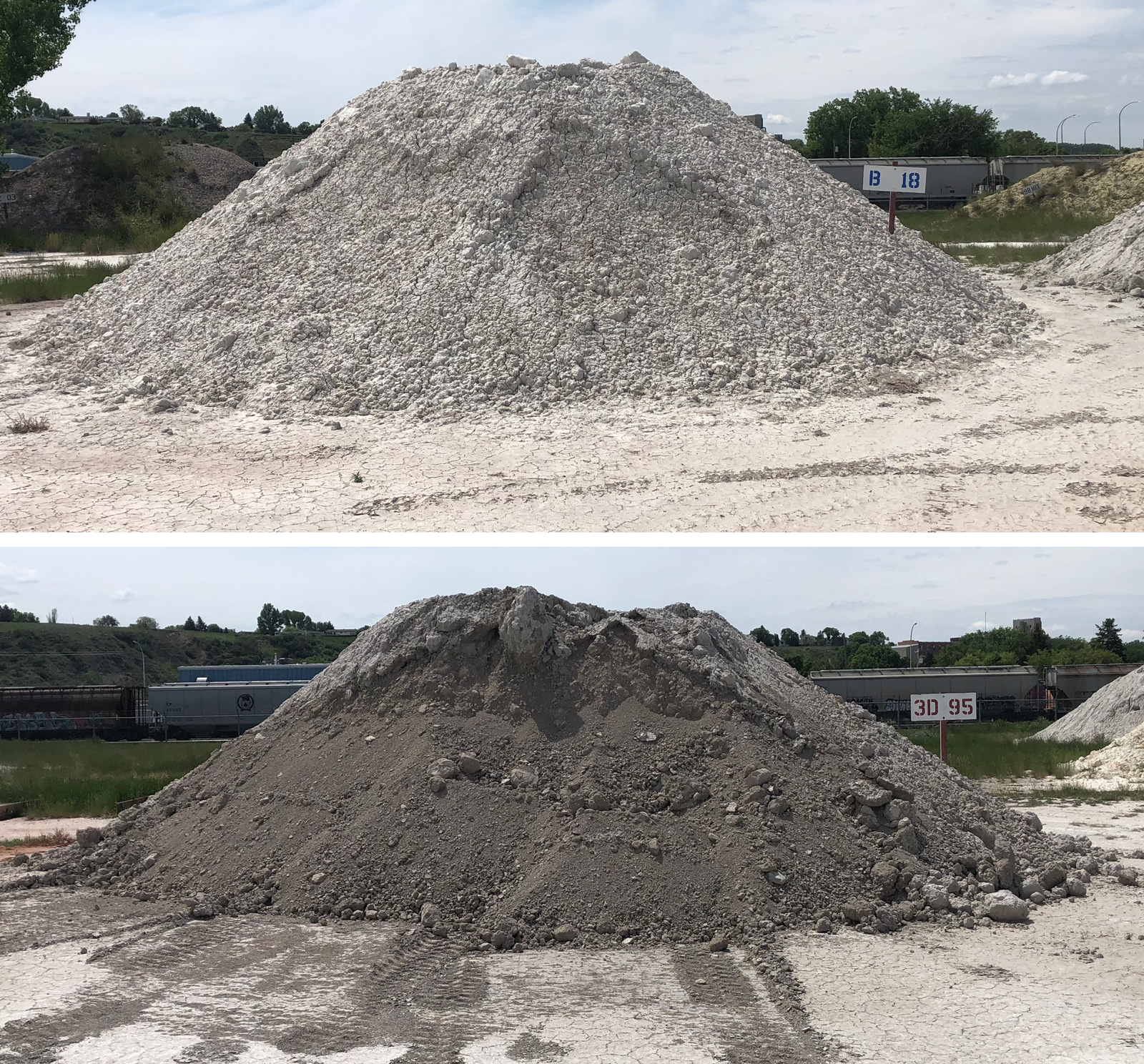| Monthly Tech-Tip | No tracking! No ads! |
The top pile of clay can make one million coffee mugs. The bottom one can glaze ten million!
These are raw clays behind the Plainsman Clays plant. The top one is a middle temperature stoneware. All it needs is a little bentonite (about 2-3%) to be a plastic, smooth, vitreous throwing body. If it was not mature at cone 6, that would be easy to fix by the addition of a little feldspar. Any fired-speck-producing impurities can be removed by using a propeller mixer to slurry it and then putting it through a screen (e.g. 60 mesh). After dewatering on a plaster table I am ready-to-go. And that bottom pile? That is the main ingredient in Ravenscrag Slip. All it needs is some feldspar and frit to be a base glaze at cone 6. It is non-plastic and easy to screen (although not really needed since it has few particulate impurities). Likely there are clays in your area you could use to make your own clay bodies and glazes also. The key is to characterize the material first so you know what type of body it would be best for and what to add to get it there.
Videos
Links
| Articles |
Formulating a body using clays native to your area
Being able to mix your own clay body and glaze from native materials might seem ridiculous, yet Covid-19 taught us about the need for independence. |
| Glossary |
Plainsman Clays
A clay mining and processing company in Southern Alberta since 1965. |
| Glossary |
Characterization
In ceramics, this normally refers to the process of doing physical or chemical testing on a raw material to accurately describe it in terms of similar ones. |
Got a Question?
Buy me a coffee and we can talk

https://digitalfire.com, All Rights Reserved
Privacy Policy

